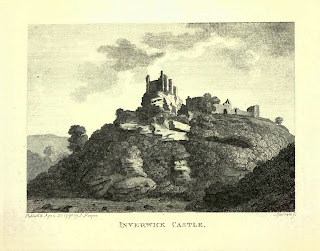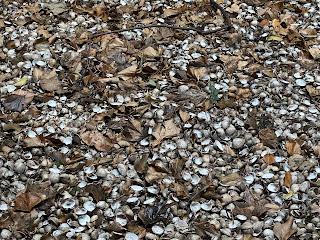I
have wandered around Leith Links many times.
I’ve gone to many fairs and events there, and up until recently had paid
very little attention to the two mounds that jut out of the flat land of the
park. I’ve sort of noticed them in
winter when kids would sledge down them, and also in summer when they are a hot
spot for sunbathers, but other than that they have not really entered my
consciousness much. Probably because I’d
always assumed, given Leith Links connection to the awful game that is golf,
that they had something to do with that.
Then a few days ago I noticed that by each of them was a Brutalist lump
of concrete with a chipped metal plaque on it.
These gave both the mounds a name, one as Lady Fyfe’s Brae and the other
as Giant’s Brae, and stated that the former was the remains of Pelham’s Battery
and the latter of Somerset’s Battery. A
quick bit of research later and it turned out that these two mounds were
actually part of an important bit of local history back in 1560, the Siege of
Leith.
The events leading up to the Siege of Leith
began almost a decade before. In 1547,
English troops arrived in Scotland, as part of the ‘Rough Wooing’ in an attempt
to force the Treaty of Greenwich on the Scots, which would see Edward VI marry
Mary, Queen of Scots in a union of the crowns.
Many of the English soldiers ended up camped near Edinburgh, at Leith
Links. Mary’s mother, Mary of Guise,
worried by this development, asked the French Crown for assistance, and in 1548
French troops began to arrive in Leith.
In 1554, Mary of Guise became the Queen Regent
of Scotland, her young daughter now being in France. She then began to have fortifications built
and improved around Leith. While all
this was going on the relationship between Mary, who was Catholic, and the
Protestant Scots began to deteriorate.
By 1559, things had got so bad between them, that Mary felt she was in
imminent danger and for a while she lived in Leith, where she felt she could be
protected by the French troops, who were also Catholic and loyal to her. Mary was later persuaded to move back to
Edinburgh. However, a group of Protestant
noblemen who were unhappy with the French troops being in Leith, amassed an
army, which led to Mary asking for more French troops to be sent over, and
having the fortifications at Leith extended further with a large earthen
rampart. This in turn led to the Scots
Protestants petitioning the English for their help in removing the French
troops.
In April of 1560, English troops arrived at
Leith and pounded the town with artillery fire.
This, however had little effect due to the rather formidable earthen
wall that had been put up as a defence.
So, to give the guns a bit more elevation three mounds were built, two
of these being the ones that still stand on Leith Links. The guns then pounded Leith, and there were
various attacks on the town by the English troops that were repelled by the
French. The siege then carried on with
food becoming scarce for those in Leith with reports that the troops themselves
were eating horse flesh and ‘the grass and weeds that grew on the
ramparts.’ While the townsfolk trapped
there were living off cockles picked from the shore and roasted cats and rats.
The attacks against Leith continued with heavy
losses on both sides. After one attack, when
the English army had again failed to break through and take the town, the
French troops gathered up the bodies of those English soldiers who had been
killed, stripped them naked and lined them up on the ramparts. On seeing this, it was said that Mary ‘hopped
with mirth’, and exclaimed, ‘Yonder is the fairest tapestrie that ever I saw. I
wald that the haill feyldis that is betwix this place and yon war strewit with
the same stuiffe.’ (Over there is the
fairest tapestry I’ve ever seen. I wish
that all the fields between this place and over there were strewn with the same
stuff.)
Mary’s joy was short lived though, as on the 11th
of June 1560 she died, probably from heart failure. After her death an armistice was agreed, and
peace was then brokered, with the French and English troops leaving
Scotland. So yet again, like much of
history, it appears that lots of people died for nothing much.
I left the Skulferatu that had accompanied me
on my wander around Leith Links, in the bark of a rather nice tree that stands
between the two mounds.
The
coordinates for the location of the Skulferatu are –
Latitude
55.970178
Longitude
-3.164135
what3words:
dome.poem.lanes
I
used the following sources for information on Lady Fyfe’s Brae, Giant’s Brae and the Siege of Leith –


























































